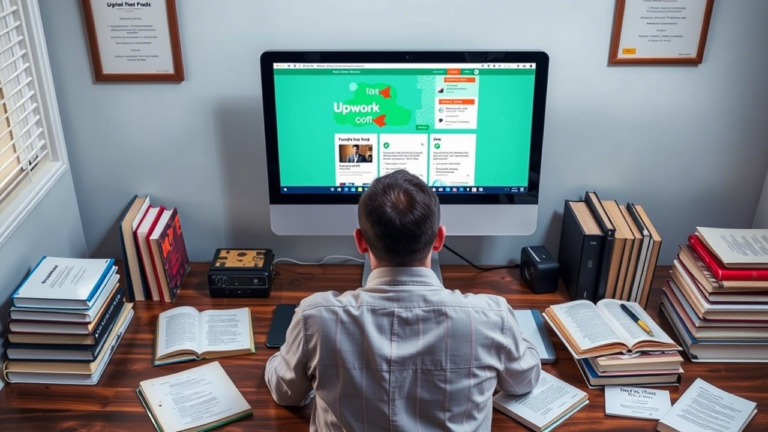Tips for Success in Graphic Design
Graphic design is a highly competitive and creative freelancing job that requires a combination of technical skills, artistic talent, and business acumen. Whether you’re a beginner or an experienced designer, these tips will help you build a successful career in graphic design and stand out in a crowded market.
1. Master the Basics
Before diving into complex projects, ensure you have a strong foundation in design principles.
- Learn Design Theory: Study concepts like balance, contrast, alignment, hierarchy, and color theory.
- Understand Typography: Learn how to choose and pair fonts effectively.
- Practice Regularly: Create personal projects or redesign existing materials to build your skills.
2. Develop a Unique Style
Having a distinct design style can help you stand out and attract clients.
- Experiment with Styles: Try different design styles to find what resonates with you.
- Build a Portfolio: Showcase your best work to demonstrate your unique style and expertise.
- Stay Consistent: Maintain a consistent style across your projects to build a recognizable brand.
3. Stay Updated with Trends
The graphic design industry is constantly evolving, so staying updated with trends is essential.
- Follow Design Blogs: Read blogs like Creative Bloq, Design Week, or Smashing Magazine for insights and tips.
- Attend Webinars and Workshops: Participate in online events to learn new skills and network with other designers.
- Experiment with New Tools: Explore new software, plugins, or design techniques to enhance your skills.
4. Build a Strong Portfolio
A strong portfolio is your most important tool as a freelance graphic designer.
- Showcase Your Best Work: Include a variety of projects that demonstrate your skills and versatility.
- Start Small: If you don’t have client work, create mock projects or redesign existing brands.
- Use Portfolio Platforms: Websites like Behance, Dribbble, or Adobe Portfolio allow you to showcase your work online.
5. Network and Market Yourself
Networking and self-promotion are essential for attracting clients and growing your freelance business.
- Leverage Social Media: Use platforms like Instagram, LinkedIn, or Pinterest to showcase your work and connect with potential clients.
- Create a Blog: Share design tips, case studies, or industry insights to establish yourself as an expert.
- Collaborate with Others: Partner with other freelancers or businesses to expand your reach.
- Ask for Testimonials: Positive reviews from clients can help build your credibility and attract new business.
6. Understand Your Clients’ Needs
Understanding your clients’ needs and goals is key to delivering successful designs.
- Ask Questions: Clarify client requirements before starting a project to ensure alignment.
- Research Their Industry: Understand their target audience, competitors, and industry trends.
- Provide Solutions: Offer design solutions that align with their brand and business objectives.
7. Deliver High-Quality Work
Your reputation as a graphic designer depends on the quality of your work and your professionalism.
- Meet Deadlines: Deliver work on time to build trust and maintain strong client relationships.
- Be Open to Feedback: Use client feedback to improve your designs and build long-term relationships.
- Go the Extra Mile: Offer additional value, such as suggesting ideas for future projects or optimizing designs for different formats.
8. Set Clear Goals
Having clear goals helps you stay focused and motivated as a freelance designer.
- Define Your Niche: Choose a specific area or topic to specialize in.
- Set Income Targets: Determine how much you want to earn and create a plan to achieve it.
- Track Progress: Regularly review your goals and adjust your strategies as needed.
9. Stay Organized
Freelancing requires excellent organizational skills to manage multiple projects and deadlines.
- Use Project Management Tools: Tools like Trello, Asana, or Monday.com can help you organize tasks and track deadlines.
- Prioritize Tasks: Focus on high-priority projects first and allocate time accordingly.
- Set Realistic Deadlines: Communicate with clients to set achievable deadlines and avoid overcommitting.
10. Continuous Learning
The graphic design industry is constantly evolving, so continuous learning is essential.
- Take Online Courses: Platforms like Coursera, Udemy, or Skillshare offer courses on design, SEO, and digital marketing.
- Experiment with New Tools: Explore AI writing assistants, content management systems, or analytics platforms to improve your efficiency.
- Adapt to Trends: Stay ahead of trends like 3D design, augmented reality (AR), or sustainable design.
Conclusion
Graphic design is a dynamic and rewarding freelancing job that offers endless opportunities for creativity and professional growth. By mastering the basics, developing a unique style, staying updated with trends, and delivering high-quality work, you can thrive as a freelance graphic designer and enjoy the freedom of working from anywhere in the world. Start your journey today and unlock the potential of freelancing in the exciting world of graphic design!



